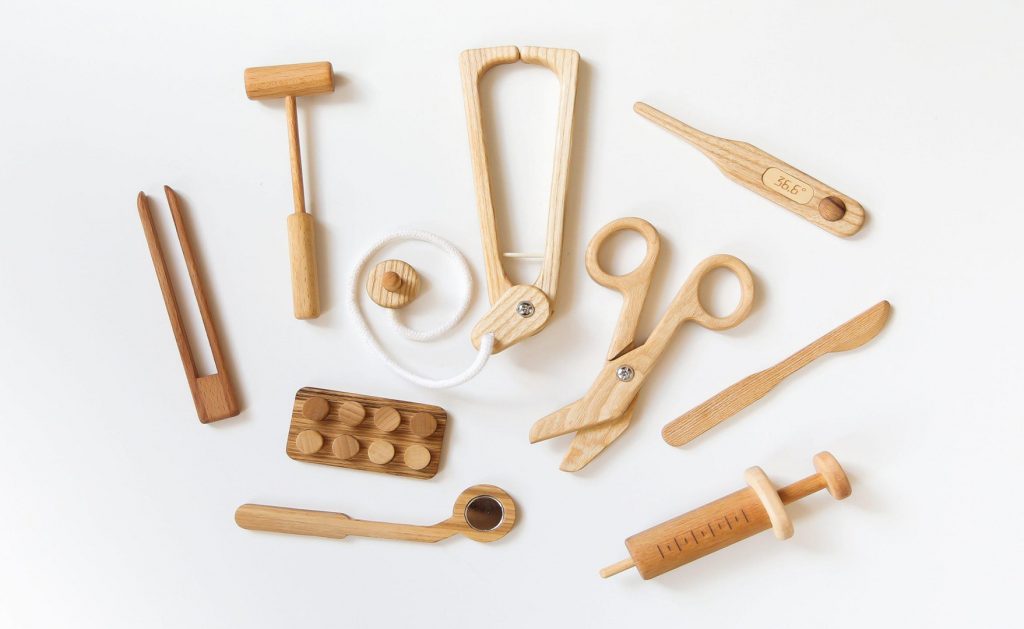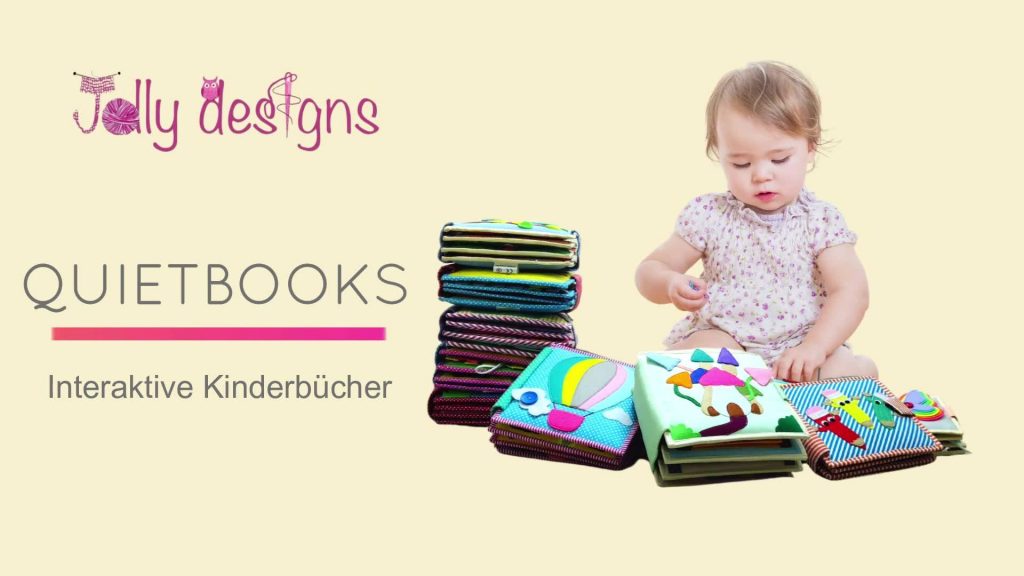Fine motor skills are always trained when the child uses the many small, delicate muscles in their hands, fingers, wrists, toes and face. These muscle groups need to be trained because the fine motor skills help your child improve eye-hand coordination, articulate clearly and concentrate for longer. They also promote his self-esteem and help him become even more independent.
Fine motor skills are required, among other things, for holding a pen. Your child needs this dexterity for drawing and painting, but also for writing. Trained fine motor skills are also required for cutting with scissors while doing crafts, turning pages of books while reading, for play activities such as building with blocks, for laying puzzles or dressing up dolls and cuddly toys. As the child gets older, activities that promote their independence become important. This includes dressing (tying shoelaces, opening and closing zippers, buttons and buckles), eating (using cutlery, opening and closing the sandwich bag/lunch box) and personal hygiene (combing, drying, applying lotion, brushing teeth).
Five Montessori toys for children aged 2 and over for training fine motor skills
We live in a time where the market is almost flooded with toys. This makes it all the more important to choose every toy your child will play with carefully and with a focus on sustainability: Can the toy be used over a long period of time without the child losing interest in it? Is it well made and will it withstand curious children's hands? Does it offer enough opportunities to explore new things during the game? Does it promote creativity? Does it stimulate the child to learn, does it help them to further develop their language?
Especially for the promotion and development of fine motor skills, there are a number of useful and durable toys that support your child in using and coordinating all of the muscle groups mentioned above. Here we have listed five of our favorites:
Stacking tower in rainbow colors
This classic stacking toy is ideal for a range of free play activities for even the youngest children. Whether color recognition or sorting the individual parts according to size, building small sculptures or balancing exercises - there are no limits to your imagination. Stacking stimulates eye-hand coordination and trains fine motor skills. The individual parts quickly become a cradle for the doll, a car bridge, a tiny dwarf house or a fence for animals. The natural surface treatment ensures that the colorful rainbow is really safe for small children. What we particularly like about this Montessori toy is the color scheme, which allows the grain of the wood to shine through.
Play – Doh dough
This playdough is another fantastic way to develop fine motor skills and eye-hand coordination. While the child presses and rolls the modeling clay extensively, cuts out shapes and puts figures together, all the important muscle groups in the fingers and hands are developed. Rolling small and large balls, shaping sausages or small objects, cutting the dough with scissors are just a few game suggestions that can be easily integrated into any theme and setup to train fine motor skills.
Precisely because there are no limits to imagination, Play Doh is always a hit with my own children. In no time at all, they can transform the soft clay into an entire animal park, their favorite fruit or entire landscapes and can immerse themselves in role-playing games for hours. Bonus: Especially during the holiday season, you can take a few pots of modeling clay with you to save space, so you'll always have enough to do even on rainy days!\

Doctor set
A doctor's set is also suitable for imaginative play. By taking on different roles, the child develops a higher level of self-care and empathy and learns to care for themselves and others in a playful way. Are you about to see a doctor or even a hospital visit? Playing with the doctor's set can help allay your child's fear of the unfamiliar situation and prepare him for the examinations. It also helps him clearly name different parts of his body and understand their roles and functions. In this way, he can express more clearly where and in what way something hurts him when he is sick himself.
I recommend you invest in a good doctor's kit made of durable material such as wood or textile. Make sure it is carefully crafted so that the set can withstand intensive play for a long time.

Quiet Books
Quiet Books are play and activity books made of fabric that offer small children a welcome break from the hustle and bustle of everyday life, without any batteries, loud noises or complex technology. Unlike the majority of plastic toys, Quiet Books are made from... Jolly Designs durable and sustainable. They promote sensory experience and offer a range of activities that are particularly suitable for children aged 6 months to 6 years to train fine motor skills and promote concentration, eye-hand coordination and logical thinking.
It is particularly important for younger children to create enough rest periods in which they can keep themselves occupied. For babies aged 6 months and over, the focus is on high-contrast images and on feeling and touching different materials and objects. All senses are stimulated and fine motor skills are trained in the game. The activities for two to three year olds range from sorting colors and shapes, tying cords and strings, unbuttoning and buttoning, finger exercises with zippers and other fasteners, puzzles to more complex tasks such as reading exercises, basic arithmetic, learning the clock and the Daily routine and board games.
The practical thing about our Quiet Books? They are easy to take with you, whether to the doctor, when traveling or to a restaurant. This means your child can go on new journeys of discovery at any time and immerse themselves in their play worlds.
Magnetic blocks
Creative activities can be developed using magnetic blocks for a variety of topics and skills. From developing fine motor skills and color recognition to game design, architecture and coding, magnetic blocks help your child develop cognitive skills. Even the youngest children learn shapes and colors using magnetic building blocks. If they are a little older, your child can use the brightly colored blocks to put together letters, numbers, animals, buildings and much more with just one click. They learn basic arithmetic in a playful way, develop their spatial thinking when building two- and three-dimensional objects and find solutions to even tricky problems. As the child gets older, you can use commercially available more complex magnetic block sets that encourage free play and interest in science, technology and math.


